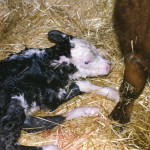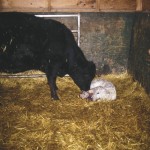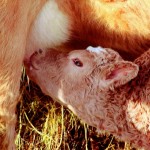
Tag Archives calving

Get newborn calves breathing and eating
Events immediately following birth are important to future health of the calf
A prolapse is not just a prolapse
There are many factors that can contribute to a vaginal prolapse

Cows can’t wait to head for green grass
Rancher's Diary: A quick look back at May as the spring season got underway with the end of calving, and time to start irrigating

Tips on selecting female replacement cattle
In reality, bulls are more dispensable than good cows

Late spring calving can pack a profit
There are management issues, but also several pluses by waiting ’til mid-May calving

Refresher on pulling a calf
Even if you have easy calvers, it's a skill worth perfecting

Dealing with broken bones in young calves
For a young calf with a hind leg fractured above the hock, a dog splint may be all you need

Treatment options for handling retained placentas
Animal Health: A common indicator of placenta retention is a decrease in milk production for calves

Time for a midwinter feed inventory
Better Bunks and Pastures: Follow these tips for a better chance at strong, healthy calves


